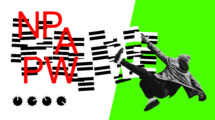GÉANT is contributing our networking expertise to help the design phase of the Square Kilometre Array (SKA)
The SKA will be two new very advanced radio telescopes to serve the next generation of cosmology and astronomy scientific investigations. The two telescopes are complementary to each other and cover different sections of the electromagnetic spectrum. SKA1-Low will be built at the Murchison Observatory in Western Australia and SKA-Mid will be built in the Karoo in South Africa.
In collaboration with SANReN (South Africa) and AARNet (Australia) members of GÉANT have been leading the design and specification of the multi-terrabit networks required internally by the SKA radio telescopes to move the information digitised by the antennas to the computer systems that extract the signals from the noise and then on to the HPCs that convert the data into sky-maps.
There are three very different networking requirements within the SKA project each with its own specific challenges.
- Transporting the data from the individual antenna (up to 100Gbps each) to the central signal processors (CSPs) requiring hundreds of links across a radius of over 100Km together with providing extremely accurate timing for the operation of the antenna.
- Transporting this data (nearly 5Tbps) to the High Performance Computing centre (HOPC) nearly 800Km away in Cape Town.
- Providing access to this data for researchers across the globe.
In addition, the group has been working on the Non-Science Data network that provides an infrastructure for each telescope that will carry all the services, many of them critical, required to operate, monitor and maintain the telescopes. All this design work was performed as members of the SKA Signal and Data Transport (SaDT) consortium for the Preliminary Design Review. The review was held last year led by an external panel of experts who asked interesting and useful questions. The basic designs were deemed to meet the requirements and after answering the observations, SaDT was approved to proceed with the detailed design.
GÉANT has a long term commitment to working with the SKA teams to help ensure both the success of the project and to enable researchers from around the world can benefit from the data collected and generated.
For more information on how GÉANT supporting the SKA read CONNECT Issue 17








Add Comment